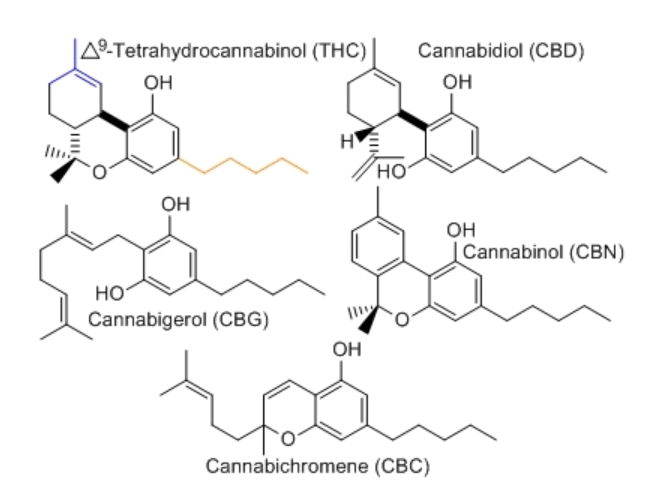CANNABINOID THERAPEUTICS
axim’s solution
We have been working for the last several months in the laboratory to develop water soluble polyfuncitional cannabinoids. We recently perfected our reaction process and have filed for a new patent. It shows that our CBD molecule is about 338x more water-soluble than CBD. To put it into perspective, if one dissolves 1G of CBD in water-octanol mixture, only 3.9 micrograms of it will end up in water; while for 1G of our new polyfuncitional CBD 1,318 micrograms will go into water.
We believe this could be a game changer for the entire cannabinoid world.
Anticipated Milestones for 2020 Cannabinoid Development
We now plan to generate next generation multifunctional cannabinoid constructs that may produce more potent response then individual cannabinoid molecules with an added benefit of being more water-soluble and bioavailable. The newly generated compounds will then be tested in several cell-based assays alongside with corresponding individual cannabinoids and mixtures thereof.
Another advantage of such hybrid systems is that bioactive compounds can be specifically tailored to have a broad spectrum of receptor affinities via single administration of a chimeric compound instead of a specific ratio of two different compounds. This is especially true for heterobifunctional compounds comprised of CBD and CBG molecules. While action of CBD is well understood and includes anti-epileptic, anti-inflammatory, anti-biotic and other activities, the biological function of CBG is still poorly understood. It is believed that CBG is beneficial for cardiac health, helps heal inflammatory bowel disease and, most important, inhibits growth of colon cancer [https://www.ncbi.nlm.nih.gov/pubmed/25269802]. The CBD-CBG hybrid may prove to have synergystic effects, which combined with improved solubility and bioavailability will provide a general new platform for the design of future cannabinoid-based drugs.
Bifunctional Cannabinoids
Next we are planning to synthesize combinations of cannabinoids: (1) CBD-CBD; (2) CBD -CBG; and (3) CBG-CBG. Three differently sized linkers will be used to determine best possible balance between water-solubility and activity. Hence, 9 different compounds will be produced in this section. These new chemical entities will be tested side by side with individual CBD/CBDA and CBG/CBGA molecules for solubility and activity (see below).

Multifunctional Cannabinoids
We plan to expand the bifunctional strategy to include three, four, … and more poly-valent CBD/CBG constructs over the next 12 months. Such linkers can be modified with the same or different cannabinoid molecules, which will further enhance their effectiveness, may produce unexpected and diverse effects, while at the same time supporting good water solubility and bioavailability. Additionally, such multifunctional constructs will allow labeling with different tracers. For example, a unique feature is the ability to add two cannabinoid molecules and a fluorescent or radioactive label. This will give us a unique opportunity to track biodistribution of the cannabinoid hybrids throughout cells or even live animals.